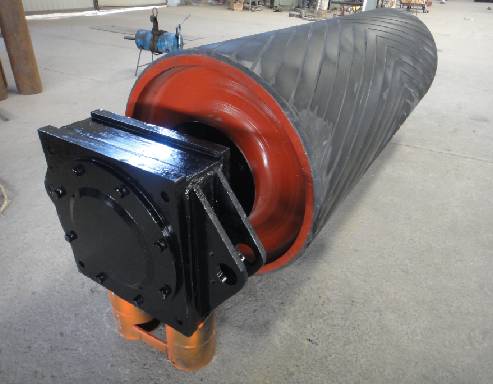 Afrikaans
Afrikaans  Albanian
Albanian  Amharic
Amharic  Arabic
Arabic  Armenian
Armenian  Azerbaijani
Azerbaijani  Basque
Basque  Belarusian
Belarusian  Bengali
Bengali  Bosnian
Bosnian  Bulgarian
Bulgarian  Catalan
Catalan  Cebuano
Cebuano  Corsican
Corsican  Croatian
Croatian  Czech
Czech  Danish
Danish  Dutch
Dutch  English
English  Esperanto
Esperanto  Estonian
Estonian  Finnish
Finnish  French
French  Frisian
Frisian  Galician
Galician  Georgian
Georgian  German
German  Greek
Greek  Gujarati
Gujarati  Haitian Creole
Haitian Creole  hausa
hausa  hawaiian
hawaiian  Hebrew
Hebrew  Hindi
Hindi  Miao
Miao  Hungarian
Hungarian  Icelandic
Icelandic  igbo
igbo  Indonesian
Indonesian  irish
irish  Italian
Italian  Japanese
Japanese  Javanese
Javanese  Kannada
Kannada  kazakh
kazakh  Khmer
Khmer  Rwandese
Rwandese  Korean
Korean  Kurdish
Kurdish  Kyrgyz
Kyrgyz  Lao
Lao  Latin
Latin  Latvian
Latvian  Lithuanian
Lithuanian  Luxembourgish
Luxembourgish  Macedonian
Macedonian  Malgashi
Malgashi  Malay
Malay  Malayalam
Malayalam  Maltese
Maltese  Maori
Maori  Marathi
Marathi  Mongolian
Mongolian  Myanmar
Myanmar  Nepali
Nepali  Norwegian
Norwegian  Norwegian
Norwegian  Occitan
Occitan  Pashto
Pashto  Persian
Persian  Polish
Polish  Portuguese
Portuguese  Punjabi
Punjabi  Romanian
Romanian  Russian
Russian  Samoan
Samoan  Scottish Gaelic
Scottish Gaelic  Serbian
Serbian  Sesotho
Sesotho  Shona
Shona  Sindhi
Sindhi  Sinhala
Sinhala  Slovak
Slovak  Slovenian
Slovenian  Somali
Somali  Spanish
Spanish  Sundanese
Sundanese  Swahili
Swahili  Swedish
Swedish  Tagalog
Tagalog  Tajik
Tajik  Tamil
Tamil  Tatar
Tatar  Telugu
Telugu  Thai
Thai  Turkish
Turkish  Turkmen
Turkmen  Ukrainian
Ukrainian  Urdu
Urdu  Uighur
Uighur  Uzbek
Uzbek  Vietnamese
Vietnamese  Welsh
Welsh  Bantu
Bantu  Yiddish
Yiddish  Yoruba
Yoruba  Zulu
Zulu self cleaning return idlers
Understanding Self-Cleaning Return Idlers A Significant Innovation in Material Handling Systems
In the world of material handling and conveyor systems, efficiency and sustainability are paramount. One of the key components that enhance the functionality of these systems is the return idler. While traditional idlers have served their purpose effectively over the years, the introduction of self-cleaning return idlers marks a significant technological advancement. These innovative components not only improve the performance of conveyor systems but also contribute to operational efficiency and environmental sustainability.
What are Return Idlers?
Return idlers are crucial components of conveyor systems that support the return side of the conveyor belt. Their primary role is to keep the belt aligned and properly tensioned as it moves back to its loading point after discharging materials. Traditional return idlers can accumulate material, dust, and debris, which can lead to belt misalignment, wear, and increased maintenance costs. This is where self-cleaning return idlers come into play.
The Concept of Self-Cleaning Idlers
Self-cleaning return idlers are designed to mitigate the issues posed by material buildup. These specialized idlers incorporate innovative features that enable them to automatically shed unwanted material as the conveyor belt moves. This mechanism significantly reduces the maintenance required to keep the idlers clean, enhancing their efficiency and longevity.
The design of self-cleaning return idlers typically includes features such as wipers, angled surfaces, and rotating brushes, which work in synergy to remove debris from the surface of the idler. This ensures that the idlers remain free of build-up, thus maintaining optimal performance throughout the operational cycle.
The Benefits of Self-Cleaning Return Idlers
self cleaning return idlers

1. Reduced Maintenance Costs One of the most significant advantages of self-cleaning return idlers is the reduction in maintenance requirements. With less material buildup, operators spend less time cleaning idlers and addressing related issues. This not only saves time but also decreases operational downtime, leading to increased productivity.
2. Extended Equipment Lifespan By minimizing the wear and tear associated with material buildup and misalignment, self-cleaning return idlers can contribute to a longer lifespan for the conveyor system as a whole. Longer-lasting equipment means lower long-term replacement costs and more efficient capital use.
3. Enhanced Safety Excessive material accumulation can lead to various safety hazards, including fire risks and potential injuries from slips and falls. Self-cleaning return idlers help mitigate these risks by providing a cleaner work environment and enhancing overall operational safety.
4. Environmental Benefits With a focus on sustainability, self-cleaning return idlers contribute to reducing waste generated from excessive material spillage and the need for frequent cleaning. Improved efficiency in material handling systems translates to reduced energy consumption and a lower environmental impact.
5. Improved Performance By ensuring that the conveyor belt remains properly aligned and tensioned, self-cleaning return idlers optimize the performance of the entire conveyor system. This leads to smoother operations, better material flow, and ultimately, improved throughput.
Conclusion
Incorporating self-cleaning return idlers into material handling systems represents a forward-thinking approach to enhancing efficiency and sustainability. With benefits including reduced maintenance costs, extended equipment lifespan, improved safety, and a lesser environmental footprint, these innovative components are proving to be a game-changer in the industry. As industries continue to seek ways to optimize operations and reduce costs, the adoption of technologies like self-cleaning return idlers will play a critical role in shaping the future of material handling systems. Embracing such advancements not only paves the way for improved performance but also supports a more sustainable and efficient operation, benefitting both businesses and the environment.
-
Revolutionizing Conveyor Reliability with Advanced Rubber Lagging PulleysNewsJul.22,2025
-
Powering Precision and Durability with Expert Manufacturers of Conveyor ComponentsNewsJul.22,2025
-
Optimizing Conveyor Systems with Advanced Conveyor AccessoriesNewsJul.22,2025
-
Maximize Conveyor Efficiency with Quality Conveyor Idler PulleysNewsJul.22,2025
-
Future-Proof Your Conveyor System with High-Performance Polyurethane RollerNewsJul.22,2025
-
Driving Efficiency Forward with Quality Idlers and RollersNewsJul.22,2025





























